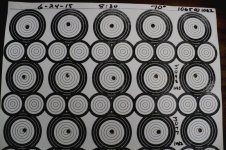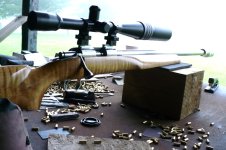I've copied this from the Tony's initial post about how Kevin chambers. Not sure if this was from an initial post 10 years ago or a more recent one. The only reason I bring this up is there really isn't much out there on rimfire chambering as there is centerfire. There are plenty of threads devoted to cf chambering.
"Quote" from Kev
If you are interested, I use JGS carbide reamers, at 180rpm, fed exceptionally slow (cleaning chips every .100, and .030 on the last pass) with the older (non EPA compliant) tap magic fluid. Not sure what is in that stuff, but it cuts exceptionally clean chambers with sharp tools. I chamber in a steady rest from the tailstock. There are a million ways to do it, and again, not saying this is the best way (it's just the best way I've found, for my equipment). "Quote"
Kev, are you still using this method? I'm guessing that if you're in a steady then you're between centers?
I tried this initially years ago & wasn't happy with what I'd done. I don't machine between centers at work very often, ( could be years between doing so), so had some vibration.
Anyhow, I have been machining thru the spindle in either a 4 jaw, or most recently set-tru 3 jaw. I made a spider for the back of the spindle but have all but abandoned that to & have just been using delrin bushings that are a slight interference fit.
I've got a Heavy 10 at home so it has a short spindle. The lathe's at work spindles are to long for a spider & our barrels so was where I initially went with this method.
I also use a PTG floating holder after much deliberation years ago reading all the cf threads. Most everyone prefers a pusher feeling that any other way has the potential to muck up concentricity. I hoped that our rf chambers being considerably shorter that wouldn't show up. I haven't seen it to this point.
Anyhow just curious how others prefer doing them.
Keith



